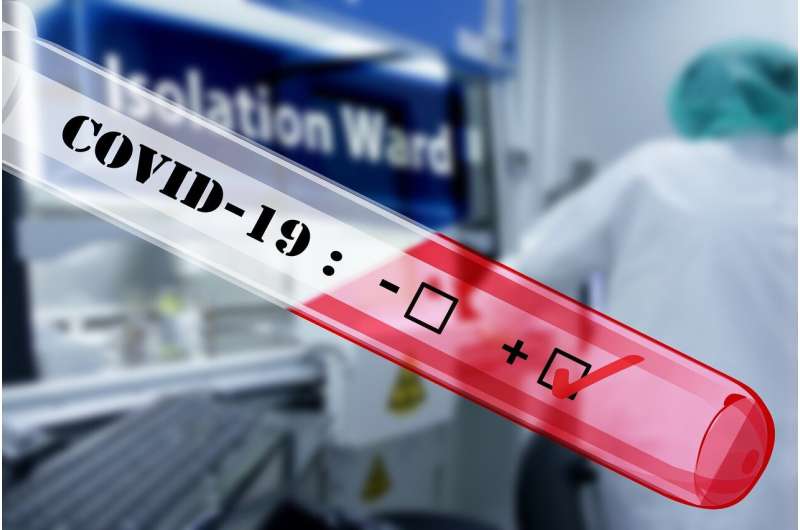Credit: CC0 Public Domain
As the coronavirus pandemic spreads, we've asked readers what they most want to know about its impact, prevention and treatment. This is an answer to some of those questions.
When is COVID-19 most contagious? When are you no longer considered contagious?
People sickened by COVID-19 are most infectious when they are showing symptoms, including fever, coughing and shortness of breath, according to the Centers for Disease Control and Prevention.
But new research confirms that those without symptoms are playing a significant role in spreading the virus. A study of cruise ship passengers found that nearly 18% of them tested positive and had no symptoms. State of Minnesota and University of Minnesota researchers modeling the pandemic's effects now estimate that one infected person is spreading it to as many as four others. That's up from two to three transmissions per infected person, reflecting the greater role of asymptomatic transmission, according to Minnesota Health Commissioner Jan Malcolm.
That's why public health officials recently changed guidelines on masks to suggest that people who are out in public should wear a homemade mask to lower the chances that they will make someone else sick.
The virus is still thought to be primarily transmitted by breathing in the respiratory droplets released by an infected individual.
"Person-to-person transmission occurs when an individual with the infection emits droplets containing virus particles while coughing, sneezing, and talking," according to a recent article published on the Journal of the American Medical Association website.
The virus can also exist on surfaces. "Survival of the virus on innate surfaces has been an important topic of discussion. While there are few data, the available evidence suggests that the virus can remain infectious on inanimate surfaces at room temperature for up to 9 days," the JAMA article said. That's why it is important to wash your hands and try to avoid touching your face.
After a person recovers, it is unclear how long they remain contagious. Genetic material of the virus may be detectable up to two weeks after infection, but that "does not necessarily mean that infectious virus is present," according to the CDC.
Is there an average length for COVID-19 illness to run its course?
It really depends on how bad the symptoms are and whether any serious complications develop. "About 80% are mildly to moderately symptomatic," said Dr. Timothy Sielaff, chief medical officer at Allina Health. "That can mean fever, cough, muscle aches and lethargy, which last a few days and improve over several more; typically 2 weeks or so."
These mild cases can recover at home because there is no treatment for COVID-19.
When complications develop, such as pneumonia, hospital care may be needed so doctors can monitor symptoms and provide support to stabilize the situation and hopefully keep things from getting worse.
"Severe illness can last longer especially if hospitalization or intensive care is needed; on the order of 3-6 weeks," said Sielaff.
What is the criteria is to be listed as "recovered?" Do they assume if your fever and cough is gone you're recovered?
The Minnesota Health Department so far has kept in contact with all people who have tested positive. Each case differs, so recovery depends on the guidance provided by a doctor or a public health official. But generally, people are considered recovered when the symptoms go away.
"If you are sick, we are asking people to stay home for at least seven days and you need to be fever free for at least three days without the aid of fever reducing medications," said Kris Ehresmann, infectious disease director at the Health Department.
The World Health Organization considers two negative COVID-19 tests taken 24 hours apart to be part of its official definition of recover, but a shortage of tests makes that difficult.
"It will be useful to the individual and the community to have negative testing to confirm, but we do not have enough tests available right now," said Dr. Timothy Sielaff, chief medical officer at Allina Health.
Journal information: Journal of the American Medical Association
©2020 Star Tribune (Minneapolis)
Distributed by Tribune Content Agency, LLC.
























